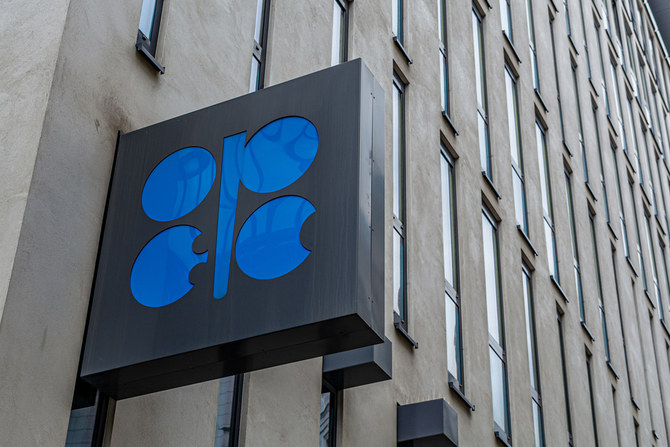OPEC and its allies begin two days of meetings on Wednesday to decide whether to release more oil into the market or restrain supply amid big gyrations in crude prices and uncertainty about the impact of the Omicron coronavirus variant on energy demand.
Oil prices fell to near $70 a barrel on Tuesday, after hitting a three-year high above $86 in October, posting their biggest monthly decline in November since the start of the pandemic, as the new variant raised fears of a glut.
In November, Brent fell by 16.4 percent, while US crude fell 20.8 percent, the biggest monthly fall since March 2020.
Both contracts rebounded sharply on Wednesday, gaining about 5 percent.
Iraqi oil minister Ihsan Abdul Jabbar said he expected the Organization of the Petroleum Exporting Countries and its allies, known as OPEC+, to extend existing output policy in the short term, the state news agency reported.
OPEC+ ministers, including those from the group’s biggest producers Russia and Saudi Arabia, have said there was no need for a knee-jerk reaction to amend policy.
Since August, the group has been adding an additional 400,000 barrels per day of output to global supply, as it gradually winds down record cuts agreed in 2020, when demand cratered because of the pandemic.
Algerian energy minister Mohamed Arkab said on Tuesday that OPEC+ would supply the global market with enough oil but urged caution about the impact of the Omicron variant, Algerian state news agency APS reported.
“The threat to oil demand is genuine,” said Louise Dickson, senior oil markets analyst at Rystad Energy. “Another wave of lockdowns could result in up to 3 million bpd of oil demand lost in the first quarter of 2022.”
But Goldman Sachs said the oil price slide in recent days had been excessive, with the market now pricing in a 7 million bpd hit to demand.
Adding pressure to prices, Federal Reserve Chair Jerome Powell said the US central bank was likely to discuss speeding up its reduction of bond purchases amid a strong economy and expectations that a surge in inflation would persist.
OPEC meets on Wednesday at 1300 GMT. That meeting will be followed on Thursday by a gathering of the wider OPEC+ group.
A delegate from the OPEC+ alliance said Wednesday’s OPEC meeting “should be straightforward.”
But some analysts have suggested OPEC+ might put its plans to add 400,000 bpd to supply in January on hold.
Even before concerns about Omicron emerged, the group had been weighing the effects of last week’s announcement by the United States and other countries to release emergency crude reserves to temper energy prices.
OPEC+ has been gradually scaling back last year’s record output cuts of 10 million bpd, equivalent to about 10 percent of global supply. About 3.8 million bpd of cuts are still in place.
But OPEC’s November oil output has again undershot the level planned, as some OPEC producers have struggled to hike output, a Reuters survey found, after years of low investment and amid global pressures to reduce fossil fuel use.



















